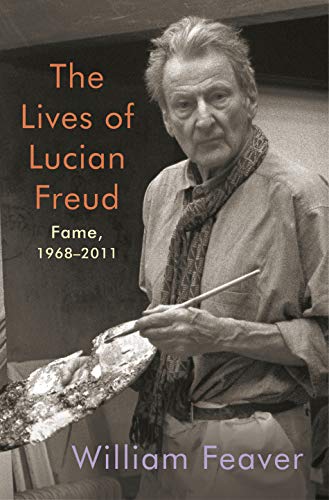The Lives of Lucian Freud: Fame, 1968-2011

Full Title: The Lives of Lucian Freud: Fame, 1968-2011
Author / Editor: William Feaver
Publisher: Knopf, 2021
Review © Metapsychology Vol. 25, No. 22
Reviewer: Christian Perring
William Feaver’s two volume biography of the British painter Lucian Freud is a total of 1280 pages, or 44 hours and 40 minutes in audiobook. Feaver was an art journalist in the 1970s and became a friend of Freud in the 1970s. He spent a good deal of time with Freud and spoke to him on the phone frequently. He has curated exhibitions on Freud, and worked on a TV documentary. He and Freud had an agreement that Feaver would write some kind of biography, though Freud could have hardly envisaged it would be so long and boring. Freud had suggested that Feaver write a comic novel based on his life.
The problem with the biography is, paradoxically, that there is too much of Freud in it. In their discussions, Feaver recorded the words of Freud talking about his life, and he includes a great many of them. Feaver doesn’t get to present a distinct point of view of his own. He acquiesces to Freud’s insistence that there should be no theorizing about his painting. So Feaver’s role is primarily as a recorder of the great man’s words. The book will undoubtedly be a useful resource to a future biographer of Freud or the London art scene in the second half of the twentieth century,, but it would be hard to recommend it to anyone wanting to gain much insight into art.
The audio versions, performed by Jonathan Keeble, are remarkably consistent and make it a good deal easier to get through the two volumes. Potential readers might take a quick look at the Wikipedia entry for Freud and find a good source for finding Freud’s works online. The wikiart page is useful.
The irony is that Freud’s life is interesting. Grandson of Sigmund Freud, he was born in Austria and moved to the UK with his family when he was a boy. Throughout his life he benefited from income from the publication of Sigmund Freud’s works. But Lucian was not a man to keep to a budget. Instead, he was from quite early on, an inveterate gambler on horse racing. For much of his life, he had little money, or was in debt. He was a famously bad driver who paid no attention to “no parking” signs. He often befriended some in the upper classes, including royalty, and criminals. For most of his life he lived alone, and assiduously avoided forming his own family. However, he did marry twice and he got a lot of women pregnant. He had at least 16 children, and possibly many more than that. Even in his later decades he could do headstands. He was a deeply unfashionable artist for a good portion of his career as an artist, painting realist works at a time when the artworld was engaged in pop art, abstract expressionism, performance art, conceptual art, and anything but portraits. But by the end of his life he was rated by some as the greatest living British artist.
Freud comes out of this biography as deeply non-conformist, Bohemian, unconventional in some ways but very much a product of his generation in others. What we don’t get is much explanation of what is so good about his art.
Christian Perring occasionally teaches philosophy of art.
Categories: Memoir
Keywords: British art, biography
